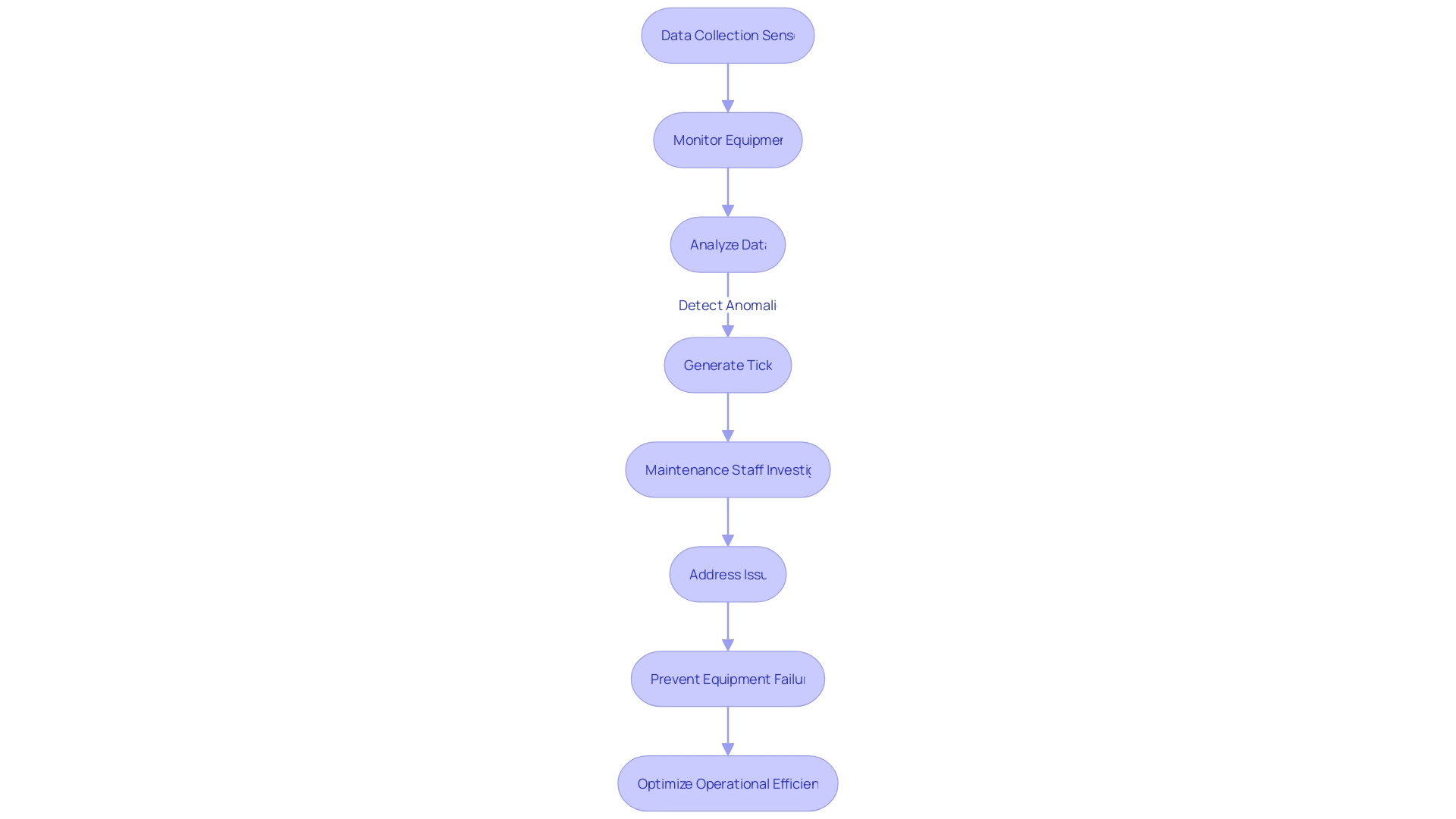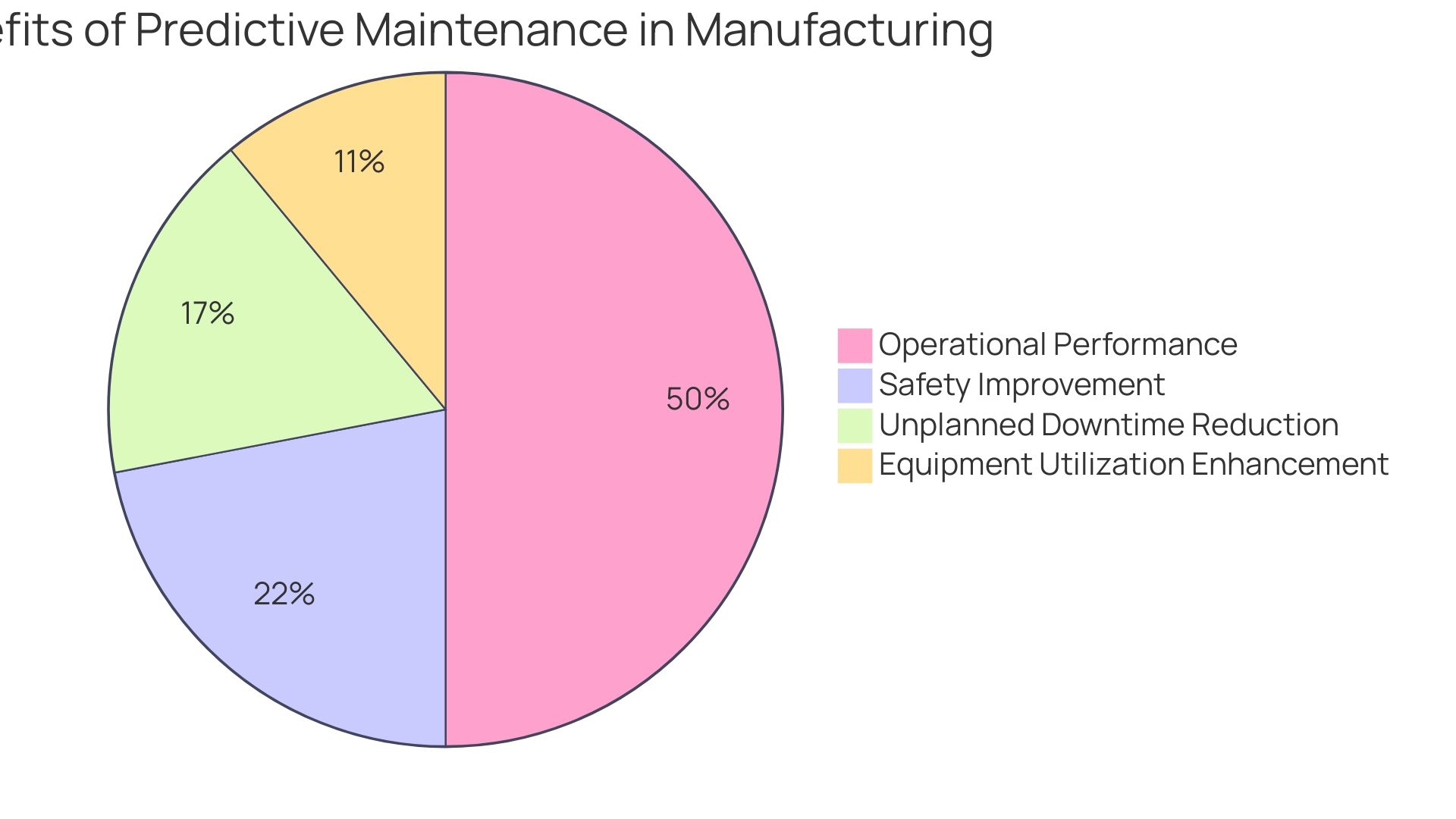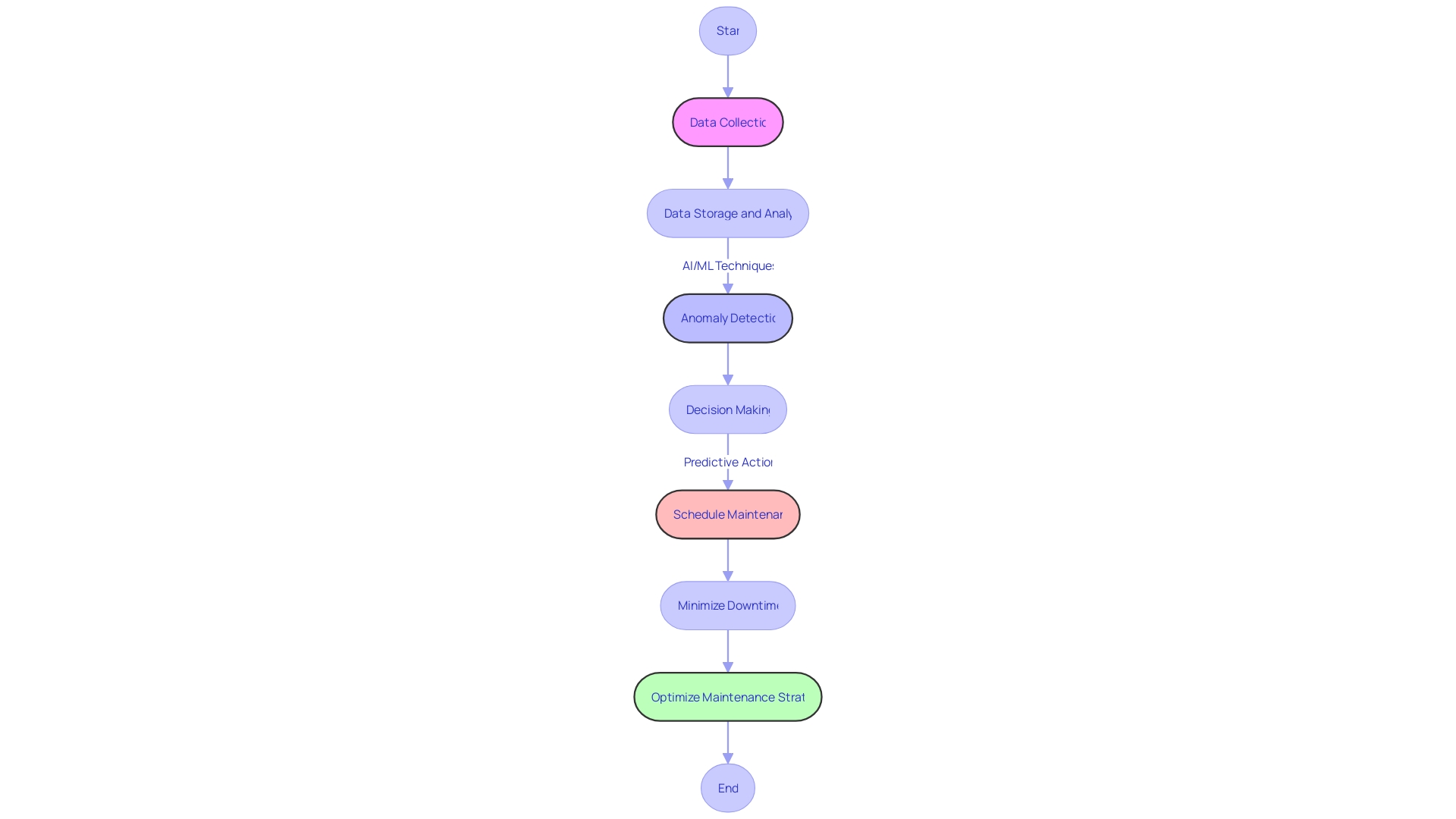Introduction
Predictive maintenance is revolutionizing the way organizations handle equipment upkeep, offering a smart and proactive approach to maintenance schedules. By leveraging real-time data and historical analysis, companies can anticipate machine issues before they escalate, leading to substantial cost savings and improved equipment performance.
In industries such as manufacturing, energy, and aerospace, predictive maintenance has proven to be invaluable in preventing downtime, optimizing repairs, and ensuring uninterrupted operations. With the anticipated market growth of predictive maintenance, driven by advances in IoT and AI, businesses can harness this transformative approach to enhance workplace safety, operational efficiency, and financial sustainability.
Benefits of Predictive Maintenance
Harnessing predictive maintenance, organizations are revolutionizing the way they handle equipment upkeep. Unlike preventive maintenance, which operates on a predetermined schedule, predictive maintenance relies on real-time data and historical analysis to anticipate when a machine may require attention.
This smart approach not only reduces unnecessary downtime but also optimizes maintenance schedules, leading to substantial cost savings. By proactively identifying issues before they escalate, companies can improve equipment performance and extend the lifespan of their valuable industrial assets, thus enhancing financial sustainability.
For instance, in the manufacturing sector, by analyzing large volumes of fault and maintenance data, companies can prevent the high costs associated with unscheduled equipment downtime. In the energy industry, predictive maintenance enables efficient repairs in remote locations, like wind farms, saving on travel time and costs for technicians.
The aerospace industry benefits from predictive maintenance by avoiding critical failures and unplanned groundings of aircraft, ensuring flight schedules remain uninterrupted. The significance of predictive maintenance is underlined by the anticipated market growth to $28.2 billion by 2026, driven by advances in IoT and AI. Implementing predictive maintenance not only streamlines operations but also bolsters workplace safety. Timely maintenance interventions reduce the risk of accidents, creating a safer environment for employees. With the wealth of performance data collected, organizations can make more informed decisions on maintenance and resource management, further contributing to operational efficiency and competitive advantage in the industrial landscape.

Key Components of Predictive Maintenance
Predictive maintenance stands as a transformative approach in the maintenance landscape, leveraging the Internet of Things (IoT) to forecast equipment failures before they occur. At its core, predictive maintenance systems integrate data collection sensors, advanced data analytics, and machine learning algorithms to monitor equipment conditions in real-time.
This integration allows for the detection of anomalies that could signify impending breakdowns, thus enabling timely interventions. Crucial to the success of these systems is the quality of data they gather.
As highlighted in recent studies, incomplete or low-quality data can severely compromise the accuracy of AI-driven predictions. To combat this, sophisticated fault models have been developed, incorporating parameters such as process details, timestamps, and component information, yielding robust and reliable datasets.
These models have been instrumental in semiconductor manufacturing, where precision is paramount and even minor process deviations can have significant repercussions. The predictive maintenance market, which reached a valuation of $5.5 billion in 2022, is expected to grow steadily, driven by the need to minimize costly equipment failures and enhance operational efficiency.
The implementation of predictive maintenance is not without its challenges, including the necessity for specialized expertise and the potential for high initial costs. However, the long-term benefits, such as improved equipment longevity, optimized productivity, and energy efficiency, present a compelling case for adoption. The potential of predictive maintenance is further underscored by its ability to integrate with existing systems, such as Computerized Maintenance Management Systems (CMMS), creating a seamless workflow for maintenance staff. When anomalies are detected, a ticket is generated, prompting staff to investigate and address the issue, ensuring that equipment operates at peak performance. In conclusion, while predictive maintenance is an increasingly vital component of modern manufacturing and operations, its success hinges on the integrity of data and the strategic implementation of IoT technologies. The convergence of these elements can lead to significant savings and operational enhancements for businesses that navigate the initial hurdles.

Implementing Predictive Maintenance in Manufacturing
The advent of predictive maintenance in various industries has revolutionized the way maintenance is approached, from reactive to proactive strategies. For instance, in the manufacturing sector, large semiconductor companies are harnessing the power of analyzing extensive fault data, maintenance logs, and trace data to predict and prevent equipment failures.
By incorporating detailed parameters such as process specifics, timestamps, and component information into fault models, these companies are able to create robust datasets that enable them to maintain high yields despite the inherent complexities and frequent variations in their processes. Utilizing virtual sensors, they can monitor and adjust specific parameters in real-time to ensure processes remain on target.
Moreover, industries such as aerospace have found predictive maintenance invaluable for aircraft engines, helping to avoid critical failures and unplanned groundings that affect flight schedules. Similarly, energy companies are applying these techniques to windmills, optimizing repairs in remote locations and improving efficiency.
The use of time series databases, which are adept at managing time-stamped data, further enhances predictive maintenance by facilitating the storage and analysis of large volumes of data. This proactive approach not only minimizes the risk of employee and customer dissatisfaction but also contributes to financial sustainability by lowering maintenance costs and extending the lifespan of valuable industrial assets. As highlighted by Freddie Coertze, the national business manager for ifm Australia, predictive maintenance stands out by leveraging data analysis to foresee maintenance needs, thus reducing downtime and maintenance expenses. This strategic use of IoT and AI-driven predictive formulas is essential for the success of predictive maintenance programs, ensuring the safety and reliability of operations in an increasingly competitive and demanding industrial landscape.
Real-World Case Studies of Predictive Maintenance
The transformative impact of predictive maintenance in the manufacturing sector is exemplified by the substantial benefits companies are reaping. Through the strategic analysis of extensive fault data, maintenance logs, and trace data, organizations like large semiconductor manufacturers have significantly improved their operational yield.
By incorporating parameters such as process details, timestamps, and intricate component information into fault models, these companies have developed robust datasets that serve as the foundation for their predictive maintenance strategies. This approach has led to remarkable outcomes, including a notable instance where a company reduced its unplanned downtime by 40% and enhanced equipment utilization by 20%.
These improvements are not only a testament to the effectiveness of predictive maintenance but also highlight the role of advanced data analytics in optimizing manufacturing processes. Despite the challenges posed by the complexity of manufacturing operations, which often experience shifts and drifts, the adjustment of specific parameters between runs ensures that processes remain consistent and on target. The results are clear: predictive maintenance not only safeguards the significant investments made in industrial equipment but also contributes to creating a safer workplace by preemptively addressing potential failures, ultimately fostering a more financially sustainable operation.

The Role of Data Analysis in Predictive Maintenance
In the evolving landscape of predictive maintenance, data analysis emerges as the cornerstone for optimizing maintenance strategies and ensuring continuous improvement. Advanced technologies such as AI, IoT, and cloud computing have surmounted previous barriers, allowing for more efficient storage and analysis of the vast data streams generated by machinery. Time series databases, in particular, are pivotal, offering a robust framework for capturing and parsing time-stamped data.
Their capacity to handle substantial data volumes and deliver rapid query responses facilitates the real-time decision-making necessary for predictive maintenance. The granularity of data analysis provided by these databases is instrumental in discerning long-term patterns and potential equipment issues. Predictive maintenance spans across various types, but anomaly detection is increasingly gaining traction.
Its rise is attributed to the method's ability to provide a nuanced view of equipment health by analyzing maintenance requirements, operational conditions, and historical data. Despite the challenges, such as data quality and the need for specialized expertise, the implementation of predictive maintenance is demonstrating tangible benefits. Organizations report a substantial return on investment, with a significant percentage achieving amortization in under a year, underscoring the financial viability of these strategies.
Industries ranging from aerospace, where predictive maintenance is critical for avoiding aircraft groundings, to energy and manufacturing, are reaping the benefits of this proactive approach. In the context of workplace safety, predictive maintenance is not just a cost-saving measure but a vital contributor to a safer working environment, preventing accidents by addressing equipment issues before they lead to failures. The accumulation of data through predictive maintenance practices equips organizations with an invaluable resource, enabling them to make well-informed decisions on equipment upkeep and resource allocation.

Predictive Maintenance Tools and Technologies
Harnessing the power of IoT sensors, big data analytics, and machine learning algorithms, predictive maintenance transcends traditional upkeep strategies by providing precise, real-time insights into equipment health. This data-driven approach empowers businesses to preemptively address machine issues, significantly reducing the risk of unexpected failures and the associated high costs. As Fernando Brugge from IoT Analytics aptly puts it, "Predictive maintenance is not only a smart way to optimize equipment performance and lifecycle, but also a strategic way to enhance operational efficiency and competitiveness."
The integration of AI and digital twins is refining these predictive models, enabling more accurate and reliable decision-making. This technological evolution is steering the predictive maintenance market towards an impressive valuation of $28.2 billion by 2026, as companies recognize the substantial financial advantages, including the avoidance of costs upwards of $100,000 for a single predicted asset failure, and the reduction of unplanned downtime costs, which can average $125,000 per hour across various industries. As the industry leans towards Predictive Maintenance as a Service (PaaS), it promises to lower implementation costs and hurdles, making this advanced strategy more accessible to a broader range of businesses.
Conclusion
In conclusion, predictive maintenance revolutionizes equipment upkeep by leveraging real-time data and historical analysis. It reduces downtime, optimizes maintenance schedules, and leads to substantial cost savings.
Industries like manufacturing, energy, and aerospace benefit from improved efficiency and uninterrupted operations. The anticipated market growth of predictive maintenance, driven by IoT and AI advances, highlights its significance.
Implementing predictive maintenance enhances workplace safety, operational efficiency, and financial sustainability. Success relies on data integrity and strategic implementation of IoT technologies.
Predictive maintenance integrates sensors, analytics, and machine learning algorithms. Despite challenges like initial costs and expertise requirements, the long-term benefits make it compelling.
Real-world case studies demonstrate improved yield and optimized processes through advanced analytics. Predictive maintenance tools provide real-time insights into equipment health. AI integration enhances decision-making accuracy. Overall, predictive maintenance offers a transformative approach to enhance safety, efficiency, and sustainability. By anticipating issues before they escalate, businesses achieve cost savings and improved performance. With expected market growth driven by IoT and AI advancements, predictive maintenance becomes a competitive advantage in the industrial landscape.





